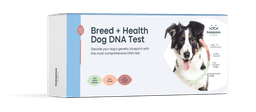Anyone who has done it before knows it’s a thing of joy. Yet it may also seem slightly daunting. As you want the process to go smoothly, it is best to be prepared. You need to learn all there is to dog whelping. The moment dog pregnancy symptoms become apparent, start making preparations for the whole journey.
How do you know if your dog is pregnant? If you need to go from the very beginning, all the symptoms of pregnancy in dogs are mentioned here. This article also explains how to take care of a canine in this condition. But here you are ready for the process itself.
Preparing for Whelping
Being prepared in advance is crucial for ensuring a smooth delivery when your dog gives birth.
Signs That Labor Is Approaching
As your dog approaches her due date, you may observe some alterations in her behavior. Perhaps she begins to walk back and forth, scratch at her bed, or appear agitated—these are indications that she is getting ready for labor. A significant sign is a decrease in her body temperature, typically falling below 100°F (37.8°C), which frequently occurs approximately one day before labor commences. You might also see her lose interest in food, which can be another clue that it’s almost time.
Essential Supplies for Whelping
Prior to the event, it is advisable to collect all necessary items. Begin with a dog whelping box. A warm, peaceful space is ideal for a dog giving birth. Fresh towels and disposable gloves let you handle the birthing properly.
Grab some small scissors so that you can cut the umbilical cord if the need arises. The pups must stay warm after birth so buy a good quality heating pad. Ensure you have your veterinarian's contact information readily available in case you need to make an urgent call during the process of helping with dog whelping.
Steps to Assist During Labor if Necessary
Your dog will be able to handle the birthing process by herself. There are normally no issues. If she appears to be having difficulty or if there is a significant delay in the birthing process, then you should intervene. Assist her gently if she appears to be struggling. Avoid overstepping as sometimes simply being present is sufficient. In case the canine starts giving birth on the sofa or your bed, let her go on with the process. VCA Animal Hospitals claims that relocating the dog during labor will cause discomfort to both the mother and the puppies.
Postpartum Care for the Mother Dog
Monitoring The Dog's Health After Birth
After the laborious process of giving birth, your dog will require a period for relaxation and recuperation. Watch her closely for any indications of not feeling well. Excessive bleeding, abnormal discharge, or signs of extreme fatigue can be concerning. A little bleeding is to be expected. Too much or prolonged bleeding is concerning so contact your veterinarian if that happens.
Ensuring Proper Nutrition And Hydration
Producing milk for the puppies is more hard work for the canine. It is completely normal for her to be eating more than usual as she needs a lot of food and water at this point. Always provide a supply of high-quality food and clean water. Do check with the vet if you notice that she is not consuming food or fluids appropriately.
Identifying Signs Of Postpartum Complications
It is crucial to remain cautious of possible issues following your dog's delivery, even if everything appears to be on track.
Potential Pregnancy Complications
Be cautious of these complications after your dog has given birth to her puppies.
Eclampsia may occur when her calcium levels decrease too much, leading to feelings of shakiness or weakness.
Difficulty during childbirth is called dystocia in dogs. It typically occurs during labor but can also lead to complications after the birth.
A mammary gland infection known as Mastitis causes pain during nursing and can become severe if not treated.
When to Seek Veterinary Assistance
If you see any symptoms of these issues - such as shaking, difficulty breastfeeding, or excessive bleeding - do not hesitate to seek assistance. They have a lot of experience in birthing pups and their medical training can prove to be invaluable.
Caring for Newborn Puppies
New puppies are delicate creatures. They are fragile so additional attention is needed. The puppies should be nursing properly and kept in a warm place as soon as they are born. This is because they are unable to regulate their own body temperature and need external heat. If any of the puppies appear too frail or are struggling to nurse, assist by providing some extra feed. Care and focus are the main requisites to ensuring that the small puppies become stronger each day.
Conclusion
Helping your dog through the process is gratifying yet demanding. All you need is proper preparation and attentive observation. With a touch of patience, you can ensure that both mother and her puppies have the best beginning possible. Dog whelping is not a very difficult process but dig deep and learn everything you possibly can to help your dear friend.
Frequently Asked Questions
How to tell if a dog is pregnant? Signs of pregnancy in dogs: a big expanding belly and a change in her behavior. An ultrasound gives the full confirmation.
How long do dogs stay pregnant? 63 days is a dog’s pregnancy on average. It can vary on either side.
How do I know when my dog is done giving birth? Your dog will be relaxed after the birthing and she will not be straining herself.
My dog is nesting: how long till labor? Nesting behavior usually starts a few days before labor, but it varies from dog to dog. Keep an eye on her, and you’ll likely notice other signs that labor is near.



